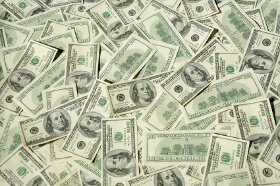The US dollar managed to end the week flat against the Japanese yen, but otherwise the greenback was very weak during the past trading week. The reasons for the poor performance were the monetary policy outlook as well as macroeconomic data that was not that great.
Economic reports released over the week were not good for the most part. The most important of them, non-farm payrolls, was not bad but also not good enough to prevent the dollar from falling.
The underwhelming data resulted in speculations that the Federal Reserve is not going to raise interest rates in the foreseeable future. The CME FedWatch page almost ruled out a March hike, and chances of a June hike stand little over 35%.
While the US dollar managed to hold its ground versus the yen, it had little success against other currencies, be it major or commodity ones. The most notable gainer was the Australian dollar that profited from the passiveness of Australia’s central bank.
EUR/USD rallied from 1.0912 to 1.1001. GBP/USD gained from 2.6% from 1.3856 to 1.4222, bouncing from 1.3835 — the lowest rate since March 2009. USD/JPY was down from 113.95 to 122.15 during the week but bounced to close at 113.94. AUD/USD jumped as much as 4.2% from 0.7120 to 0.7431 — the highest weekly close since July.
If you have any questions, comments or opinions regarding the US Dollar,
feel free to post them using the commentary form below.
